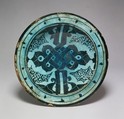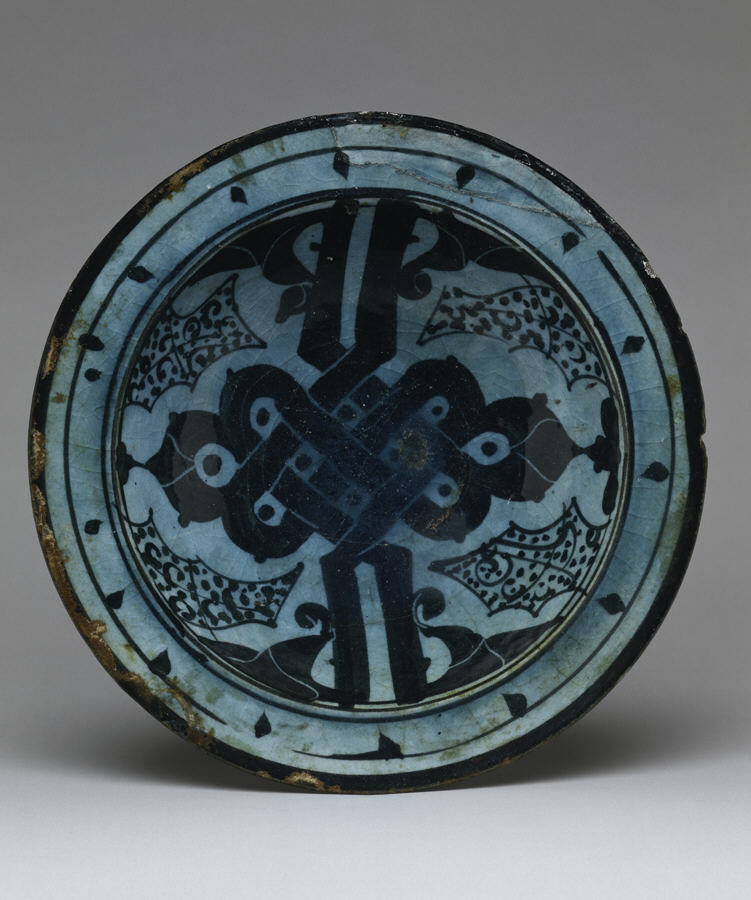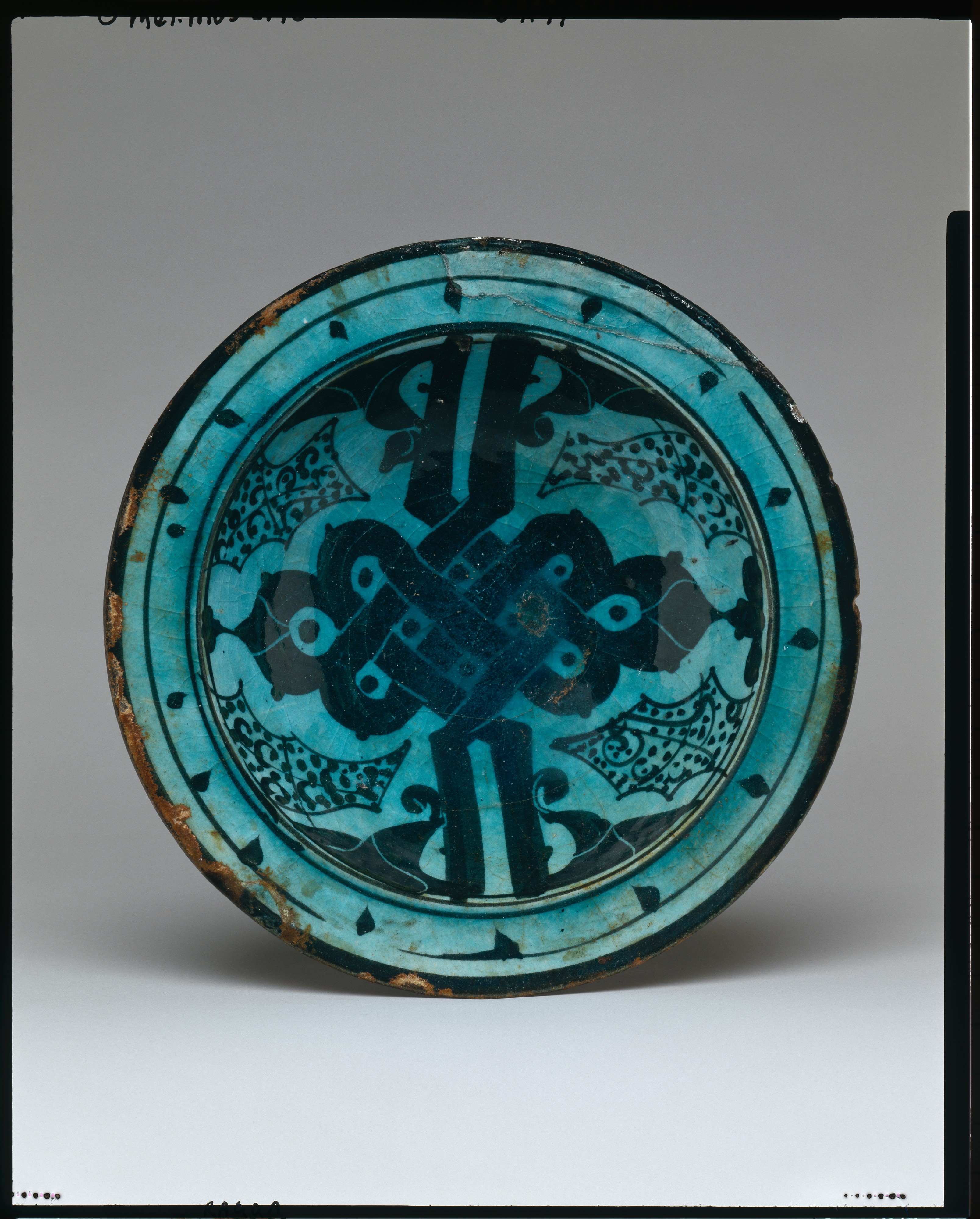Bowl with Alif-lam Motif
Gertrude Bell, the famous archaeologists and writer, received the photograph of this bowl during her 1909 trip to Syria, likely from a diplomat and antiquity dealer in Aleppo. This and other vessels in the photo were said to come from Raqqa. While many of these objects were actually found in Raqqa, the high demand of "Raqqa ware" on the market in the early 20th century certainly had as a consequence that dealers would always claim such provenance for their objects. Archaeological research has now ascertained that similar objects, whose distribution included Anatolia, Syria, Egypt and even in Europe, were produced in several workshops in Syria and Egypt.
The main design painted on this bowl recalls an epigraphic motif in which the vertical shafts of the letters lam and alif are richly interlaced among them.
Due to rights restrictions, this image cannot be enlarged, viewed at full screen, or downloaded.
This artwork is meant to be viewed from right to left. Scroll left to view more.






